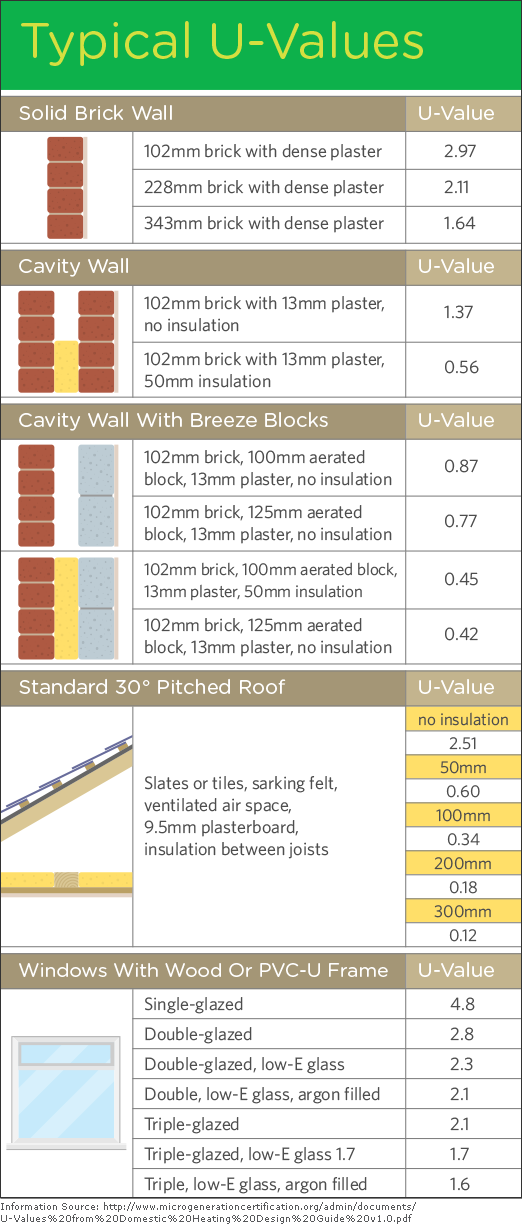The “U-value” is a mysterious new piece of jargon used in our industry, that often leaves people confused. What are U-values, how do they affect your home, and what can you do to reduce them?
A U-value is the unit of measurement that describes how much heat is lost from a particular building material, such as a wall, window or roof. A low U-value means that the material is good at retaining heat, a high U-value means that it loses a lot of heat. As far as your home is concerned, the lower the U-value, the better.
The scientific bit
U-value is measured in watts per metre-squared kelvin, or W/m2K. In other words, it is the amount of energy (in Watts, or W) that travels through one square metre of a material (m2) per every 1 degree of temperature difference between inside and outside (K).
U-values can apply to single materials (e.g. a metal sheet) or a composite building element (e.g. a brick wall and a layer of plaster).
Building regulations
The government have set out maximum U-values that are allowed when constructing a new building. This keeps carbon emissions and energy bills down, and makes building more comfortable to live and work in. The maximum values depend on a number of factors, such as the size of the building and its intended use (check for the latest info on the planning portal website).
U-values of different materials
The table below shows the typical U-values of various building materials.

As you can see above, insulating your house can drastically reduce its U-values. Insulating your cavity walls can reduce their U-values by nearly two thirds. Getting your loft insulated can cut the U-value of your roof right down from 2.51 to 0.12. The lower the overall U-value of your home, the less heat you will use, and the less money you will need to spend.
And finally
If saving money and reducing carbon doesn’t make you care about your U-values, this heart-warming little film we spotted on the Energy Saving Trust website will! When you’ve finished watching it, head on over to our free insulation page to find out how to reduce heat loss in your home. You know you want to!


One Reply to “What Are U-Values?”
Comments are closed.